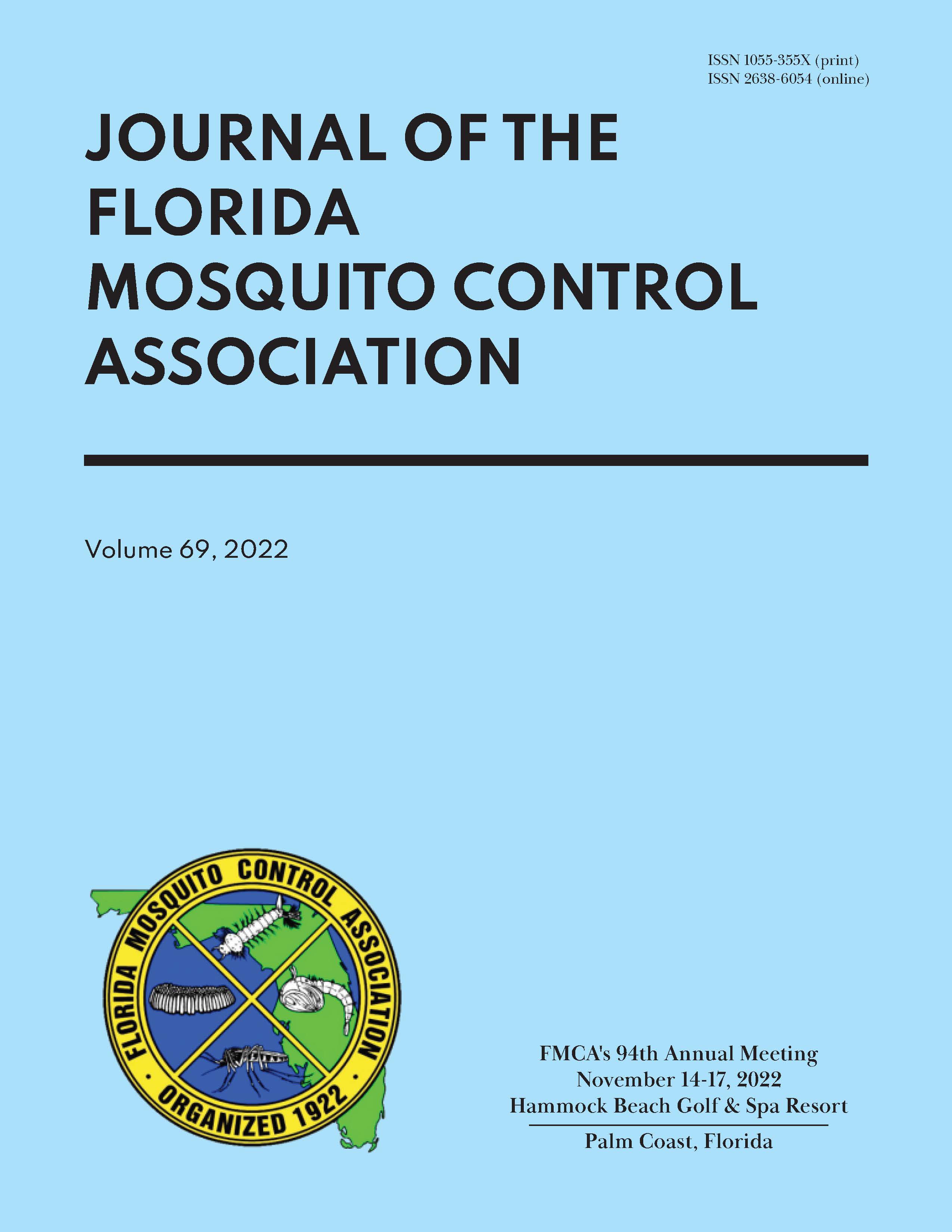FIELD EVALUATION OF EMERGENCE TRAP DESIGN FOR MONITORING MANSONIA PRODUCTION FROM WATER LETTUCE (PISTIA STRATIOTES)
DOI:
https://doi.org/10.32473/jfmca.v69i1.130634Keywords:
emergence trap, water lettuce, water hyacinth, MansoniaAbstract
Larvae of the mosquito species Mansonia titillans and Mansonia dyari attach to the roots of floating aquatic plants, primarily water lettuce (Pistia stratiotes) and water hyacinth (Eichhornia crassipes), to obtain oxygen and avoid predators. Surveillance for these species involves a robust monitoring program that identifies Mansonia habitat and production sites. This report evaluates floating emergence trap efficiency for Mansonia surveillance and identification of production sites. Three trap designs were utilized in the evaluation trials, including standard passive emergence traps, modified (active) emergence traps containing a CDC-light trap with and without standard incandescent bulbs. Overall, the active emergence trap with light resulted in the collection of a significantly higher number of emerging mosquitoes.


